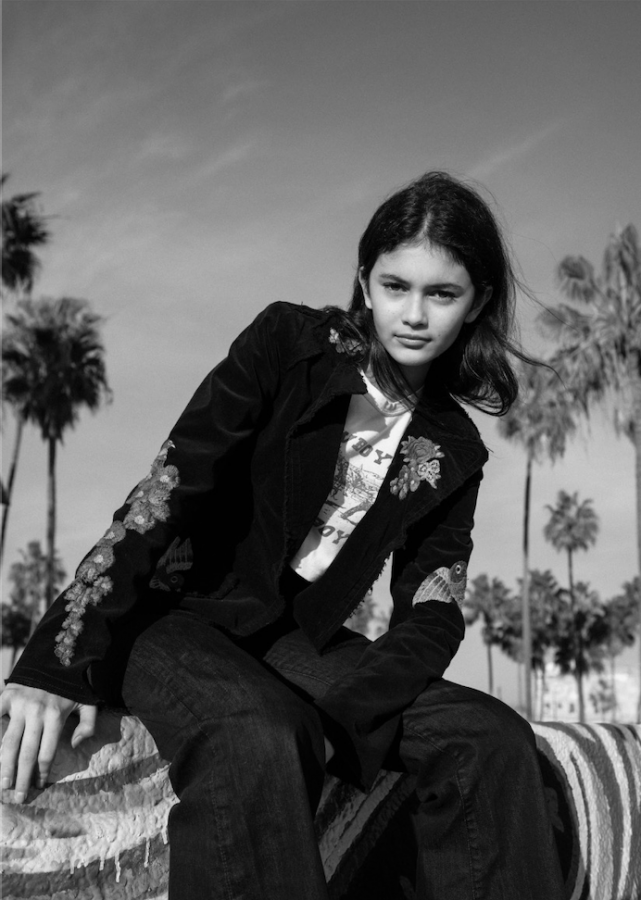As Alanah Dakar ’22 waited for the cashier to finish scanning her groceries, a Vogue magazine featuring a Gucci floor-length lace gown caught her eye. She was stunned by the boldness and beauty of the photo on the cover, but she was even more impressed when she realized singer-songwriter Harry Styles was wearing the flowing gown.
“[Styles] is so talented and a big force of change in the fashion industry, so I think being on the cover of Vogue was well deserved,” Dakar said. “His outfits were so good, and I think anything new in fashion receives a critical response from groups of people who don’t want fashion to change.”
Prior to the 20th century, the ideas of gender norms in clothing were essentially nonexistent, according to the Smithsonian Magazine. For the past decade, it has been accepted that women wear skirts, pants and dresses, and most of the clothes they are “allowed” to wear can be considered masculine or feminine. For men, it is considered customary to wear pants and seen as abnormal or “feminine” to wear anything but. It was not until the mid-20th century that gendered clothing rose to power, and only girls were expected to wear dresses and boys to wear pants with no crossover.
With the rise of social media platforms and the fall of past traditions, an increasing number of women and men are becoming more comfortable and flexible in their gender identities.
Many of Styles’s fans on Twitter were excited about the Vogue issue, as he is the first man to be featured alone on the cover, but many were also shocked by his decision to wear what were previously considered women’s clothes. Even before appearing on the cover, Styles has been vocal about his gender fluidity and his ongoing fight against toxic masculinity. In a photoshoot for his most recent album, “Fine Line,” Styles was shown in a tutu, tights and a leotard, items of clothing typically associated with women’s fashion. In his issue of Vogue, Styles discussed his opinions on gendered clothing.
“When you take away ‘There’s clothes for men, and there’s clothes for women,’ [and] you remove any barriers, obviously you open up the arena in which you can play,” Styles said in an interview with Vogue. “I’ll go in shops sometimes, and I just find myself looking at the women’s clothes thinking they’re amazing.”
Nancy Zhang ’21 is a fashion blogger who can often be seen wearing high-scale outfits on her Instagram account, which has around 11,000 followers. She also had nothing but praise for the singer-songwriter for his Vogue cover.
“I think challenging gender norms is becoming more of a trend in the fashion industry,” Zhang said. “However, it’s [taken] a long time for high-end designer brands to incorporate such themes. In fashion, it’s mostly about the shape, color, meaning and function of each garment. I think Harry Styles is a great representation of such.”
Despite the positive reactions to Styles’s Vogue cover, political activist and conservative author Candace Owens voiced her complaints with the cover on Twitter.
“There is no society that can survive without strong men,” Owens said in a Tweet. “The East knows this. In the West, the steady feminization of our men at the same time that Marxism is being taught to our children is not a coincidence. It is an outright attack. Bring back manly men.”
Owens faced some backlash after publishing these tweets. There have also been some negative responses in regards to the amount of recognition that Styles has received for the cover. Ben Brill ’21 believes that Styles’s cover story was noteworthy, but not necessarily as innovative as he believes that the media has made it out to be .
“People have done what he did before and have done it better,” Brill said. “Ultimately Harry Styles gets more [credit] for challenging gender norms than someone like [rapper and singer-songwriter] Young Thug, who wore a dress on the cover of his album ‘Jeffrey,’ because [Styles] is white. Regardless, his shoot definitely challenged some people’s idea of how a man should be expected to dress, which was positive.”
Performing Arts Designer Alex Kolmanovsky said he agrees with Brill that Styles’s cover was not necessarily revolutionary but that fashion is arbitrary and subjective.
“Fashion is fiction,” Kolmanovsky said. “From Louis XIV to David Bowie to every other dude in art schools to Harry Styles, men have worn ‘women’s’ clothing, although all for different reasons, proving that fashion is a fickle fiction.”
Ally White ’22 said she also believes that the cover story could have taken a much bigger risk.“There have been many marginalized groups of people like trans women of color who have lost their lives for expressing themselves the same way that Harry Styles, a white cis[gender] man has,” White said. “I believe that while Vogue decided to feature a solo man for the first time, this was an example of them breaking the norm in a safe way, by having a white cis[gender] man.”
There are also many other men in Hollywood who have been wearing “feminine” clothing on the runway. Billy Porter wore an embroidered suit and a pink cape to the Golden Globes in January of 2019. He started with wearing traditionally feminine-colored clothing, and at each subsequent award show, he continued to dress in “women’s” clothing, wearing suits with ball gowns as bottoms, tutus, golden unitards and much more. Other actors, such as Jonathan Van Ness, Timothée Chalamet and Tan France, have also decided to challenge what it means to be masculine by walking the runway in bright colors, glitter and dresses.
Singer-songwriter Billie Eilish has also received praise from fans for subverting ideas of stereotypical women’s clothing in Hollywood. She can often be seen sporting oversized jackets, shorts and pants. Eilish has been vocal about her clothing choices, claiming she wears multiple layers of clothing to prevent her body from becoming a distraction from her music.
“It kind of gives nobody the opportunity to judge what your body looks like,” Eilish said in an interview with Elite Daily. “I want layers and layers and layers, and I want to be mysterious. You don’t know what’s underneath, and you don’t know what’s on top.”
When it comes to the evolution of fashion, Lexie Warlick ’21 said that although not everyone shares the same opinions on gendered clothing, she believes that the most important change is wider acceptance of all who want to ignore gender roles in their clothing.
“I think it will take time and mainly a trickle-down effect in which more and more high-end fashion retailers start the trends of eliminating gender roles through clothing,” Warlick said. “These trends will then make their way down to more and more everyday people. While I don’t think all men would get to the point of wearing skirts, I think the concept is going to become more widely accepted, and that is what matters most.”






























